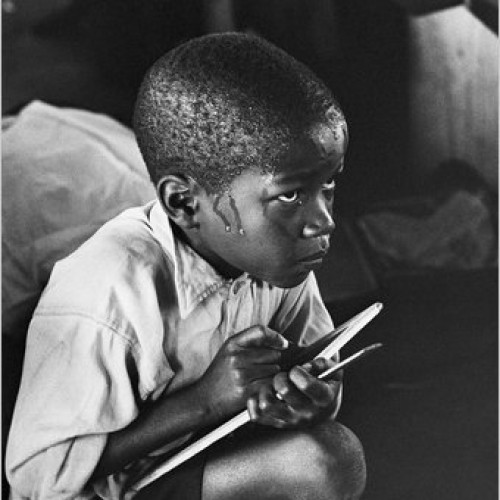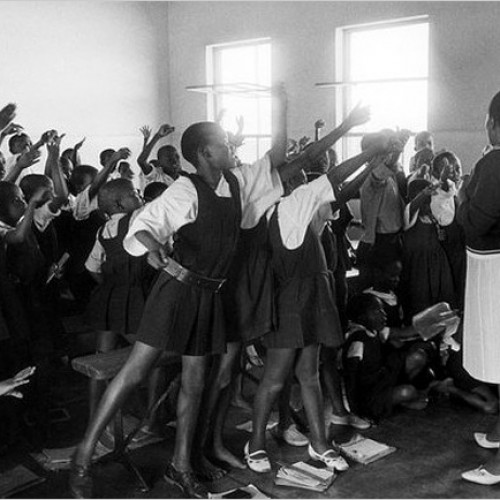Ernest Cole at NYU’s Gray Art Gallery: 1960s South African Photojournalist Brings Up Contemporary Race Issues
I recently saw “Ernest Cole Photographer” which is on display through December 6 at the Gray Art Gallery at New York University. This is the first solo exhibition of Cole’s work in the US which was organized by the Gothenburg’s Hasselblad Foundation. The exhibition features 120 photograph which stem from his time working as a photojournalist in South Africa in the late 1950 and 60s.
Cole was born in 1940 in the township of Eersterust, Pretoria. Several years later his family was forced to relocate to Mamelodi as a result of the Group Areas Act of 1950. Growing up in a very politically charged time in South Africa greatly affected how Cole would come to view the world. Cole began taking photographs at a young age which would turn into a life long passion for him.
In 1958, Cole began working as a dark room assistant at DRUM Magazine, a publication geared towards black lifestyle located in Johannesburg. Working under the supervision of fellow photographer and artist Jürgen Schadeberg, Cole started to become politically active. During this time he met various artists, musicians and political leaders who were also fighting in the anti-apartheid movement. With Schandeberg’s help, Cole enrolled in a correspondence course with the New York Institute of Photography. Cole would go onto to document the political situation in South Africa while working as a photojournalist for various newspapers. These photographs would become the basis of his 1967 book House of Bondage which was banned in South Africa.
In 1966, Cole was arrested by the police and was given to options–to either join their ranks as an informant or be sent to prison. Given the options the police gave him, Cole left for Europe taking only necessities and the layouts for his book. He spent the next 23 years of his life in exile shuttling between Europe and the U.S. He died in New York City in 1990.
The 120 photographs on display take up two floors of the gallery’s space. The sheer volume of them and many of the scenes they depict are overwhelming. They are moving, hard to sometimes confront and expose a very different side to South Africa and the way it has come to be known in a modern context. Cole’s beautiful compositions showcase many day to day events that were common to South Africa at that time such as lines of male workers waiting to get paid to children in classroom settings with no desks and chairs struggling to get through the lessons at hand. Within the image “Boy in School” for example, a young South African squats with a notebook in his lap, sweating, straining to pay attention. Images such as these offer a complex and difficult illustration of a time period that still haunts South Africa today.

Compositionally, Cole’s photographs are stunning. They capture very intimate moments among various walks of life within South Africa while depicting a very specific sociocultural time. It is both their specificity and the historical importance that this images carry which only add to the importance of Cole’s work. Cole’s ability to capture intimate moments between mother and child as well groups of prisoners and workers not only underscore his talent as a photographer but also his regard for the human condition. Cole’s compulsion to document the world around him and those most affected by the oppressive regime of apartheid is one of the most powerful elements of the show. Because the pictures are in black in white also reinforces the racial issues that were occurring at this time.

Given the recent events that occurred within Ferguson, Missouri last month with the death of 18 year old Michael Brown, the timing of the Cole show at Gray Gallery seems even more poignant. While these images and Cole’s background are tied to South Africa they also call into question the current racial landscape in the U.S and it’s history. This show harbored echoes of many iconic images of Civil Rights era photographer which originated during the same time period. Cole has left behind a visual record of what it was like to be black during apartheid in South Africa that will live on for generations. However it will take generations to come to terms with this harrowing time in South Africa’s history.
–Anni Irish

